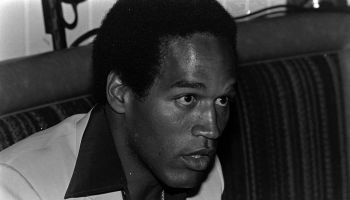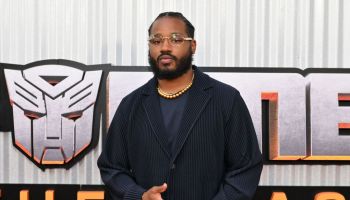The cartoon series was similar to one done about The Beatles a few years earlier.
Bieber-mania may be big, but it’s nothing compared with the frenzy that erupted when the Jackson 5 burst into the mainstream in 1969 with I Want You Back.ABC, The Love You Save and Maybe Tomorrow followed that first hit to No. 1 on the pop charts and the star of the sibling group from Gary, Ind., was just getting started.
It wasn’t just the hit singles — though they would keep coming — but a seemingly ubiquitous presence on TV, on tour, on magazine covers and in stores, where their heart-tailed J5 logo was emblazoned on every conceivable type of merchandise.
In brothers Jackie, Tito, Jermaine, Marlon and Michael, Motown had the ultimate embodiment of its boast — “The Sound of Young America.” Not surprisingly, a Saturday morning cartoon featuring the band gave their youngest fans a chance to laugh along with their heroes. The Jackson 5ive: The Complete Animated Series (1971, Classic Media Video, not rated, $33; Blu-ray/DVD combo, $40) is available for the first time on home video with all 23 episodes and 46 songs that aired on ABC from 1971 to 1973.
AMAZON: Buy this series
The series was produced by Motown and animation producers Rankin/Bass (best known such holiday specials as Rudolph and Frosty the Snowman). It came on the heels ofThe Beatles cartoon, which had aired on ABC from 1965 to 1969. And as with The Beatles, The Jackson 5ive’s fictionalized misadventures were voiced by actors and not the actual musicians. The most prominent of the voice actors was Paul Frees, who did hundreds of voices over the years, including that of Boris Badenov on The Rocky and Bullwinkle Show. Don Fullilove (who currently voices Reginald on American Dad) provided the voice of Michael, while Edmund Silvers — lead singer of ’70s family soul group The Sylvers — was the voice of Marlon.
But despite the Jacksons not being directly involved in the show, Michael was cute as ever. Fans familiar with him only from his King of Pop/Thriller days may not recognize the cherub-face imp with the Afro. His brothers had similar hairstyles, although Tito’s was mashed down under his big apple cap, and they all sported colorful big-collar shirts and bell-bottom pants.
But while you didn’t get to hear the real talk, you did get two real songs per episode. Not all of the songs were hits, though all of the big ones — Mama’s Pearl, Goin’ Back to Indiana, One More Chance, Never Can Say Goodbye — make it in along with album tracks that include covers of songs by Smokey Robinson, Stevie Wonder, the Delfonics and others.
All of the episodes involve the brothers trying to get themselves or sometimes get Michael out of a jam. In one episode, the little brother gets inducted into the army and in another he’s adopted by a lovesick gorilla. They also try their hands at farming (bad idea), pine after the same flight attendant (another bad idea) and save a forest from a greedy concert promoter. Michael also has a habit of bumping his head and them dreaming that he and his brothers were in Oz or up Jack’s beanstalk.
Michael’s pets are often the source of mischief. The first episode riffs on the apocryphal tale of their discovery by Diana Ross when she made a tour stop in Gary. (They had actually been brought to Motown founder Berry Gordy by singer Bobby Taylor, who along with the Vancouvers had the interracial-love-themed hit Does Your Mama Know About Me.) Rosie, Michael’s pink snake, who has one red and one green eye, somehow gets loose and makes its way to the venue where Ross is playing. The boys meet Ross when they come to rescue Rosie, and Ross invites them to come to Detroit for an audition after hearing them sing.
His other prominent pets are two mice, Ray and Charles, who reside in his shirt pocket but pop up when something’s afoot. Is it any wonder that his first No. 1 solo hit was Ben, which was about his friendship with a rat? He also has a Hairy Godfather, who occasionally pops up to grant Michael a wish. Of course, with all the success they were having, you’d think he could have conjured up a better ride than that get-out-and-push jalopy they boys tooled around in.















